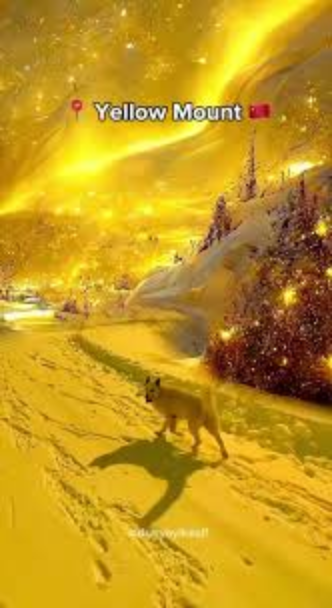
Is Yellow Mountain Real?
Yellow Mountain (黄山), located in Anhui Province, is also known as Huangshan Mountain, Mount Huang or Mt. Huangshan. It is a famous UNESCO World Heritage Site as well as one of the most visited scenic destinations in China. However, some people may wonder: Is Yellow Mountain real?
Yes, Yellow Mountain is Real
To answer the question directly: Yes, Yellow Mountain is very much real. It's not a figment of imagination or a cleverly crafted hoax. You can find it on maps, book trips to visit, and millions of tourists can attest to its existence.
Evidence of Yellow Mountain's Existence
Still need convincing? Here's some undeniable proof of Yellow Mountain's existence:
- Geological Records: Extensive geological studies have been conducted on Yellow Mountain, documenting its formation, rock composition, and other geological features. Its unique granite peaks, formed over millions of years, are a testament to its realness.
- Historical Records: Yellow Mountain has been a subject of admiration and inspiration for centuries. Chinese literature, poetry, and paintings dating back dynasties showcase its presence, highlighting its cultural and historical significance.
- Government Recognition: The Chinese government recognizes Yellow Mountain as a significant natural landmark. It's protected as a national park and boasts the prestigious title of a UNESCO World Heritage Site.
- Tourist Testimonials: Millions of tourists from around the globe visit Yellow Mountain each year. Photos, videos, and travel blogs serve as tangible proof of its existence.
- Satellite Imagery: Satellite images clearly depict the Yellow Mountain range, showcasing its unique geography and proving it's not just a myth.
Why the Question Arises
The question of Yellow Mountain's existence might arise due to several factors:
- Surreal Beauty: The mountain's ethereal beauty, with its towering granite peaks often shrouded in mist, might seem almost unreal, leading some to question if it truly exists as depicted.
- Language Barriers: Different names and variations in translation (Huangshan, Yellow Mountain, Mount Huang) can sometimes create confusion, leading some to believe they are different places.
- Limited Exposure: For those unfamiliar with Chinese geography or those who haven't had the opportunity to travel, the name might not hold the same weight as other famous mountains, leading to skepticism.
Experiencing Yellow Mountain
While evidence overwhelmingly confirms its reality, the best way to know for sure is to experience Yellow Mountain for yourself. Witness the breathtaking sunrises, hike amongst the clouds, and marvel at the ancient pine trees clinging to the cliffs.
Here's a glimpse of what you can expect:
| Feature | Description |
|---|---|
| Granite Peaks | 72 named peaks, some reaching over 1,800 meters, known for their unique shapes and formations. |
| Pine Trees | Ancient, twisted pine trees clinging to the cliffs, some over 1,000 years old, add to the mystical atmosphere. |
| Hot Springs | Natural hot springs offer relaxation and therapeutic benefits against the backdrop of the stunning scenery. |
| Sea of Clouds | A breathtaking phenomenon where a layer of clouds sits below the mountain peaks, creating a surreal and unforgettable sight. |
Yellow Mountain is more than just a place; it's an experience that will leave you in awe of nature's grandeur.
FAQs
**Q1: How do I get to Yellow Mountain?**
A: The nearest airport is Huangshan Tunxi International Airport (TSN). From there, you can take a bus or taxi to the mountain's base.
**Q2: What is the best time to visit Yellow Mountain?**
A: Spring and autumn offer the most pleasant weather and stunning scenery. However, each season has its unique charm.
**Q3: Is hiking difficult on Yellow Mountain?**
A: There are trails for all levels, from easy walks to challenging climbs. Cable cars are also available for those who prefer a more comfortable ascent.
note: This return of all, without the author's permission, may not be reproduced